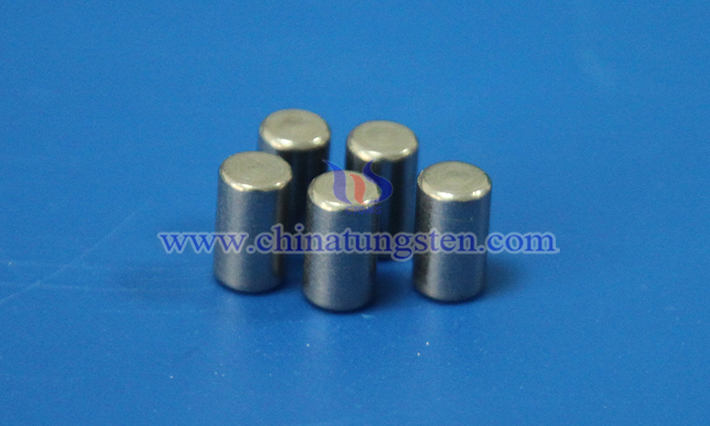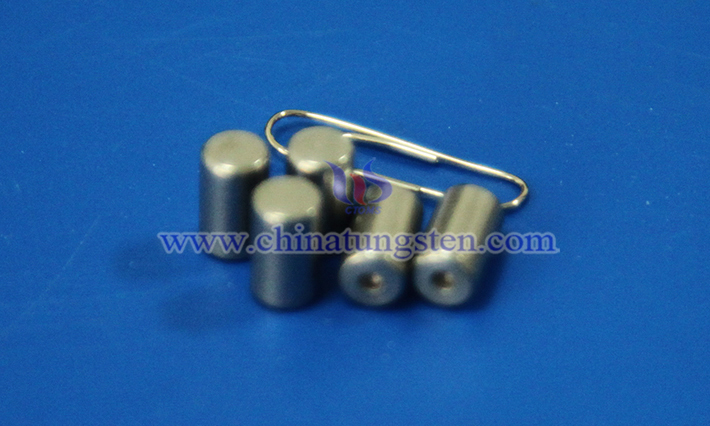Factors Affecting the Surface Energy of Barium Tungsten Electrode
- Details
- Category: Tungsten Information
- Published on Friday, 30 May 2025 17:27
The surface energy of barium tungsten electrode is affected by many factors such as intrinsic properties of the material (such as barium content, crystal structure), surface state (roughness, oxide layer), environmental conditions (temperature, vacuum degree) and preparation process (heat treatment, surface modification). In practical applications, optimizing these influencing factors can improve the electron emission performance and stability of the electrode.

1. Material Composition and Structure:
1.1 Barium Content and Distribution: As an active element, the content and distribution of barium on the electrode surface directly affect the surface energy. The enrichment of barium atoms on the surface can reduce the surface energy and improve the electron emission ability.
1.2 Crystal Structure of Tungsten Matrix: The crystal orientation, grain size and grain boundary characteristics of tungsten will affect the surface energy. For example, a specific crystal plane (such as (100) plane) may have a lower surface energy.
1.3 Impurities and Doping: Impurities (such as oxygen, carbon) or intentionally added doping elements in the electrode may change the surface atomic arrangement, thereby affecting the surface energy.
2. Surface State:
2.1 Surface Roughness: Rougher surfaces generally have higher surface energy because surface defects and irregularities increase the surface free energy.
2.2 Oxide Layer: Barium oxide or other oxide layers may form on the surface of the barium tungsten electrode. The thickness and properties of these oxide layers will significantly affect the surface energy.
2.3 Surface Cleanliness: Gas molecules (such as water vapor, oxygen) adsorbed on the surface will change the surface energy, and clean surfaces generally have higher surface energy.

3. Environmental Factors:
3.1 Temperature: High temperature promotes the diffusion and evaporation of barium atoms, changes the surface composition, and thus affects the surface energy. Usually, the surface energy decreases at high temperatures.
3.2 Vacuum: In a high vacuum environment, the surface is less contaminated and the surface energy is higher; while in a lower vacuum, gas adsorption may reduce the surface energy.
3.3 Electric Field and Ion Bombardment: When the electrode is working, the electric field and ion bombardment may change the surface atomic structure, resulting in changes in surface energy.
3.4 Atmosphere Composition: When exposed to different gas environments (such as oxygen and nitrogen), the surface may undergo chemical reactions, forming new compounds and changing the surface energy.
3.5 Chemical Adsorption: The adsorption of specific molecules (such as oxygen or carbon compounds) can significantly reduce the surface energy.
4. Preparation and Treatment Process:
4.1 Heat Treatment: Annealing or high temperature treatment will affect the diffusion and surface reconstruction of barium, thereby changing the surface energy.
4.2 Surface Modification: Processes such as ion implantation, chemical etching or coating will change the surface chemical properties and microstructure, affecting the surface energy.
4.3 Aging Process: After long-term use, the surface energy of the electrode surface may change due to barium consumption or contamination.
- Chinatungsten Online: www.tungsten.com.cn
- CTIA GROUP LTD: en.ctia.group
- Tungsten News & Price: www.ctia.com.cn
- Molybdenum News & Price: news.molybdenum.com.cn
- Tel.: 86 592 5129696; Email: sales@chinatungsten.com



 sales@chinatungsten.com
sales@chinatungsten.com